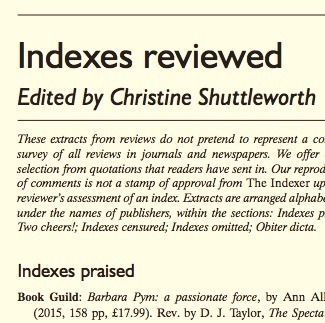Marc Abrahams's Blog, page 284
February 8, 2016
Banana shape(s) – the math(s)
Have you ever mused upon the question: ‘Is the cross section of a banana an ellipsoid, and if so, can it be used to gauge its volume and surface area? Yes? Then a report in the International Journal of Agricultural Science, Research and Technology (IJASRT) 2011 Vol. 1 No. 1 pp. 1-5, may be of interest.
“Among fruits and vegetables, banana fruit has exclusive physical properties that make it different from other fruits and vegetables such as shape and curvature. Also banana is one of fruits that need to extract its physical properties as a result of its importance.”
– explain investigators Soltani, M., Alimardani, R. and Omid, M.
of the Department of Agricultural Machinery, Faculty of Agricultural Engineering and Technology, University of Tehran, in their paper: ‘Some physical properties of full-ripe banana fruit (Cavendish variety)’. This illustration shows cross sections of bananas, and some of the relevant mathematical calculations.

And so, in answer to the question posed above:
“By ellipsoidal estimation the volume, surface and projected areas is calculated easily and reliably.”
Note: Musa cavendishii has featured in mainstream news media recently, we ask: ‘Has the imminent death of Cavendish been greatly exaggerated, or not?’
Bonus: Professor Banana is co-author of the paper: ‘A socio-economic analysis of forest foods’

February 7, 2016
How Fireflies Get It On
Sara Lewis reduced her discoveries about firefly sex to 24 seconds, and then to seven words. She performed this, as a 24/7 Lecture, at the 2015 Ig Nobel Prize ceremony:
A year before that, Lewis performed a longer version — about thirteen minutes long — as a TED talk:

February 6, 2016
Appreciation: “No index…, no table of contents…, no order”
“There is no index at the back, no table of contents at the front, and the subjects covered are not arranged in alphabetical, or any other, order. A hotchpotch is a hotchpotch, but not being able to locate or then re-find anything slowly drove me insane with fury. ”
That’s one of the delightful passages in the “Indexes Reviewed” section of issue number 3, of volume 33 — the September 2015 issue — of the journal The Indexer. the international journal of indexing.


February 5, 2016
Head butting in whales – explanations for junk
“The immense forehead of sperm whales is possibly the largest, and one of the strangest, anatomical structures in the animal kingdom.“
Leading to the question: ‘What’s it for?’ Herman Melville’s famous novel Moby-Dick suggested that one purpose might be for large-scale head-butting, the practicalities of which are reviewed in a new paper for PeerJ PrePrints, entitled :‘Architecture of the sperm whale forehead facilitates ramming combat’ The authors note, regarding the forehead, that :
“It contains two large oil-filled compartments, known as the ‘spermaceti organ’ and ‘junk’, that constitute up to one-quarter of body mass and extend one-third of the total length of the whale.” [see illustration]
 Perhaps, they reason, ‘the junk’ might serve as a kind of macro shock-absorber. And so, to examine their battering-ram hypothesis, they performed Finite Element Analysis (FEA) on a junk-equipped computer model whale head.
Perhaps, they reason, ‘the junk’ might serve as a kind of macro shock-absorber. And so, to examine their battering-ram hypothesis, they performed Finite Element Analysis (FEA) on a junk-equipped computer model whale head.
“We explore the aggressive ramming hypothesis using a novel combination of structural engineering principles and probabilistic simulation to determine if the unique structure of the junk significantly reduces stress in the skull during quasi-static impact. Our analyses indicate that the connective tissue partitions within the junk reduce stress across the skull during impact; stress reduction is greatest in the anterior aspect of the skull; and removal of the connective tissue partitions increases stress concentrations on the tip of the skull, possibly making it prone to fracture. Although the unique structure of the junk certainly serves multiple functions, our results are consistent with the hypothesis that the structure also evolved to function as a massive battering ram during male-male competition.”
Also see (animalian shock-absorber related) : The 2006 Ig Nobel prize for Ornithology was awarded to Ivan R. Schwab, of the University of California Davis, and the late Philip R.A. May of the University of California Los Angeles, for exploring and explaining why woodpeckers don’t get headaches.

February 4, 2016
Chemical Sensors Attractively at One’s Fingertips
Chemists, some of them, do pay attention to their fingernails. A team at the University of California, La Jolla (an institution that seems to exist on April 1, when it apparently migrates from San Diego), has paid special attention. Details are in their study:
“A Wearable Fingernail Chemical Sensing Platform: pH Sensing at Your Fingertips,” Jayoung Kim, Thomas N. Cho, Gabriela Valdés-Ramírez, Joseph Wang, Talanta, vol. 150, April 1, 2016, pp. 622–628. The authors explain:
“Here we introduce the first demonstration of a wearable fingernail chemical-sensor platform. The objective of this work is to demonstrate the first example of a wearable chemical sensor on a fingernail platform. Fingernails represent an attractive wearable platform, offering portability and possibility to merge technology with beauty and fashion products, thus reflecting growing trends toward more stylish wearable devices. While several efforts have been made on developing fingernail-based sensors, none has been developed for chemical sensing.”
Here’s further detail from the study:
BONUS (by some of the same researchers): Tattoo-Based Noninvasive Glucose Monitoring: A Proof-of-Concept Study

‘Social jetlag’ between dogs and humans across Europe
“People choosing a pet have a number of factors to consider. The important one is whether a pet can synchronize with humans in sleep timing.“
 – explain a pan-European [Germany | Poland | Spain] research team in a 2015 paper for the scholarly journal Time & Society. The investigators reasoned that pet dogs and their keepers in different countries might have differently synchronised biorhythms – featuring what’s called ‘Social Jetlag’ (as defined by Wittmann et alii in 2006 ‘Social jetlag: misalignment of biological and social time.’)
– explain a pan-European [Germany | Poland | Spain] research team in a 2015 paper for the scholarly journal Time & Society. The investigators reasoned that pet dogs and their keepers in different countries might have differently synchronised biorhythms – featuring what’s called ‘Social Jetlag’ (as defined by Wittmann et alii in 2006 ‘Social jetlag: misalignment of biological and social time.’)
“Participants living with dogs informed about their own and their dogs’ sleep habits. This study demonstrates synchrony in sleep timing between humans and dogs living together. Dogs experienced less social jetlag than their owners and differences between owners and dogs were more pronounced in Poland than in Germany and Spain. Polish dogs had the lowest social jetlag amongst dogs from the three countries, suggesting a greater stability of their sleep–wake cycle and less influence of the owners’ activity on their rhythm. Chronotype of dogs was earlier than that of their owners in all countries. Spanish dogs had the latest sleep pattern, followed by German dogs, with Polish dogs being the earliest. Analyses also revealed that both chronotype and social jetlag in dogs and humans living together are correlated – the later the chronotype of the owner the later the chronotype of his/her dog. The results suggest that dogs synchronize to humans in their sleep patterns.“
Reference: ‘Synchrony in chronotype and social jetlag between dogs and humans across Europe’
Also see: ‘Horses and the effects of flying’
Photo: The image depicts a dog called ‘Goblin’ who was, in 1909, a Toy Trawler Spaniel.

February 3, 2016
Artificial Lion-Roaring Contests [Podcast 49]
Artificial lion-roaring contests overwhelm this week’s Improbable Research podcast.
SUBSCRIBE on Play.it, iTunes, or Spotify to get a new episode every week, free.
This week, Marc Abrahams —with dramatic readings by Jean Berko Gleason — tells about:
 Lion-roaring, and listeners — Grinnell, Jon, and Karen McComb [pictured here] (2001). ‘Roaring and Social Communication in African Lions: The Limitations Imposed by Listeners.’ Animal Behaviour 62 (1): 93–98.
Lion-roaring, and listeners — Grinnell, Jon, and Karen McComb [pictured here] (2001). ‘Roaring and Social Communication in African Lions: The Limitations Imposed by Listeners.’ Animal Behaviour 62 (1): 93–98.Lion-roaring, and female lions — McComb, Karen, Craig Packer, and Anne Pusey (1994). ‘Roaring and Numerical Assessment in Contests Between Groups of Female Lions, Panthera leo.’ Animal Behaviour 47 (2): 379–87
Lion-roaring, and male lions — Grinnell, Jon, Craig Packer, and Anne E. Pusey (1995). ‘Cooperation in Male Lions: Kinship, Reciprocity or Mutualism?’ Animal Behaviour 49 (1): 95–105.
The mysterious John Schedler or the shadowy Bruce Petschek perhaps did the sound engineering this week.
The Improbable Research podcast is all about research that makes people LAUGH, then THINK — real research, about anything and everything, from everywhere —research that may be good or bad, important or trivial, valuable or worthless. CBS distributes it, on the CBS Play.it web site, and on iTunes and Spotify).

February 2, 2016
Five Japanese extensive interviews with Ig Nobel winners
The magazine Tech Notes is conducting a series of extensive interviews with Japanese Ig Nobel Prize winners. Here are links to the first five interviews. All are in Japanese [we present here machine translations of the headlines]:
The Ig Nobel Prize interview Laugh and Think [1st] research and Kitazatodai Mabuchi Mr. skin of banana and think humor creative ideas of origin?
Ig Nobel Prize interview Laugh and Think [2nd] If you turn off the onion really reason for tears – discovered from where there is no doubt: House Foods Group Inc. Mr. Imai
Ig Nobel Prize interview Laugh and Think [3rd] to silence people talkative! Invention of speech jammer: Tsuda College Kurihara Mr.
Ig Nobel Prize interview Laugh and Think [4th] dog language translation machine “Bowlingual”, the development history of? : Matsumi Suzuki
[Ig Nobel Prize interview Laugh and Think 5th] Pigeons distinguish the picture of Picasso and Monet! ? Of human beings to learn from animal psychology: Shigeru Watanabe

Mike Coffey joins the Luxuriant Flowing Hair Club for Scientists (LFHCfS)
Mike Coffey has joined the Luxuriant Facial Hair Club for Scientists (LFHCfS) and the Luxuriant Facial Hair Club for Scientists (LFHCfS). He says:
I am a lecturer in analytical chemistry at Nottingham Trent University, U.K. I last went to a barber at the age of 14; since then occasional trims remain times of tension in my marriage when my wife insists very hard. I grew my beard when my daughters started going through the “You are SO embarrassing” phase, just to prove a point. I wish to join before I need to apply for the “Luxuriant Former Hair” instead.
Mike Coffey, Ph.D, LFHCfS
Lecturer (Analytical Chemistry)
Chemistry & Forensics
Nottingham Trent University
Nottingham, UK


February 1, 2016
Nominative Determinism: Dr. Forrest on Trees
“
This book presents a horticultural overview of the main plant families of trees and shrubs from temperate regions that are cultivated in urban and rural landscape schemes. Most of the plants used come from a limited number of plant families and within these families, certain genera contribute very significantly. The largest chapter in the book describes 37 plant families according to their identification, functional use and management in landscape schemes. With this information readers will be able to assess the suitability of species and prepare planting designs for prevailing sites.”
Author: Dr. Mary Forrest, School of Biology and Environmental Science, University College Dublin, Ireland.

Marc Abrahams's Blog
- Marc Abrahams's profile
- 14 followers









